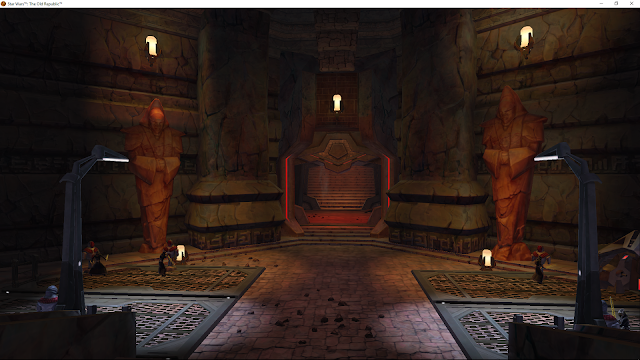Tomb of Ajunta Pall: The Final Resting Place of the First Dark Lord of the Sith
General Lore:
Ajunta Pall’s journey from Jedi Master to the first Dark Lord of the Sith is a tragic and defining chapter in the galaxy’s history. Once a revered member of the Jedi Order, Ajunta Pall’s mastery over the Force and his ability to manipulate and create life itself set him apart from his peers. His talent, however, was seen as a dangerous and forbidden path by the Jedi, and the pursuit of such knowledge led to his eventual fall. Fearful of the implications of his discoveries, the Jedi sought to halt his research, leading Pall to rebel. He and his followers were exiled to the Outer Rim, where they discovered the planet Korriban, home to the Sith species—Force-wielders who, unlike the Jedi, embraced the use of the Dark Side.
Ajunta Pall’s arrival on Korriban marked the beginning of the Sith Empire. With his superior knowledge of the Force and its forbidden arts, Pall earned the reverence of the Sith species, who saw him as a god. He became the first Dark Lord of the Sith, establishing the foundation for the Sith Order that would later threaten the Republic and the Jedi for millennia to come. The tomb of Ajunta Pall, located in the Valley of the Dark Lords on Korriban, stands as a lasting testament to his power and the legacy he left behind. Though his death and the passage of time have led to the tomb’s decay, it remains a symbol of his lasting influence on the galaxy and the Sith Order.
The Jedi Lore Keeper's Perspective:
The tomb of Ajunta Pall serves as a somber reminder of the dangers of unchecked ambition and the allure of the Dark Side. From the perspective of the Jedi, Pall’s story is one of great tragedy—a tale of a once-great Jedi who sought to push the boundaries of the Force, only to be consumed by it. His fall not only marked the creation of the Sith Empire but also set the stage for the eternal struggle between the Sith and the Jedi that has shaped the galaxy’s fate for millennia.
The Jedi Order views the Tomb of Ajunta Pall not only as a site of historical significance but also as a warning to future generations of Jedi. It is a stark reminder that the pursuit of forbidden knowledge, when driven by pride and a desire for power, can lead even the most noble of individuals down a dark path. The teachings and practices Pall sought to perfect were dangerous and divisive, and his embrace of the Dark Side created a rift that would endure for eons.
For Jedi who visit Korriban, the tomb serves as a physical manifestation of the consequences of rejecting the Jedi Code and the wisdom of the Order. In a way, Ajunta Pall’s legacy continues to haunt the Jedi, as his fall set the stage for the eternal battle between light and dark—a battle that still shapes the galaxy. Even in death, Ajunta Pall’s influence remains powerful, and the lessons of his rise and fall are ones that every Jedi must remember in their quest for balance and enlightenment.












No comments:
Post a Comment